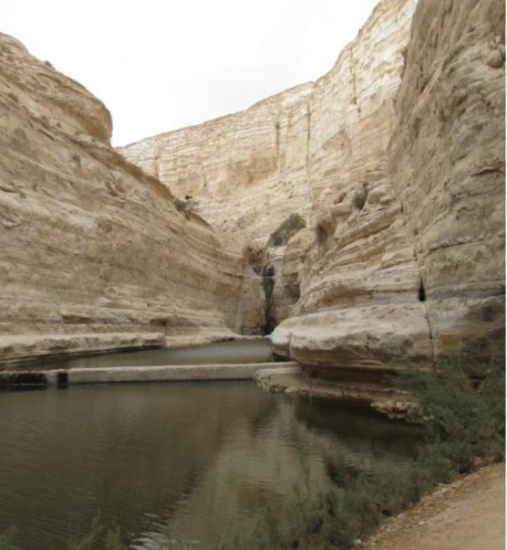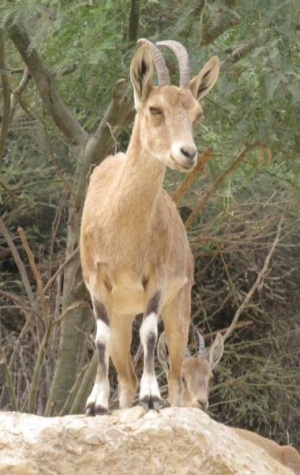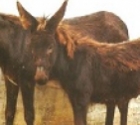
Photos & Text: Lydia Aisenberg
The view over the grand riverbed of Nahal Zin from the gravesite of David and Paula Ben-Gurion at Sde Boker is spectacular. The simplistic, solitary final resting places of the great statesman and his wife are situated on a plateau hundreds of meters above sea level affording an unbelievable view over the Zin Canyon and Avdat Heights in the heartland of the Negev.
Tranquility reigns as one walks along the twisting winding pathway from the car park to the gravesite. A herd of ibex slowly strut their stuff on either side of the sunken path, the rocks full of local flora thriving in the arid climate, sand and limestone.
The ibex stand their ground as a group of happy, snappy young tourists make their way through their habitat, the four-legged locals posing with their best sides showing for the visitors from abroad. Vying for a preferred perch on a crop of rocks, two of the bucks lock horns, grapple for a short while before both decide they have better things to do and wander off in opposite directions.
Ibex are common throughout the Negev and Judean mountains and indeed during my three-day sojourn in the region ibexes were spotted in large numbers around Mitzpeh Ramon and at various points during the journey down to Eilat. On the return haul north, we saw them again picking their way gingerly between the rocky mountains in the vicinity of Masada and Ein Gedi on the shores of the Dead Sea.
When the first prime minister of the State of Israel and his wife became members of Kibbutz Sde Boker in 1953 and retired to their modest abode there a decade later, few shared Ben-Gurion’s belief that the desert would bloom.
First standing in the shade of a few trees at the side of the Ben-Gurions' graves, the group of youthful tourists who were volunteering in a Lower Galilee kibbutz listened intently to their guide explaining about the former Israeli leader, fondly known as "The Old Man". Then, they moved toward the lip of the plateau where they stood mesmerized at the stunning view stretching into the far off yellow-beige distance.
“Well, I hope my dreams for the future are as successful as Ben-Gurion’s have been for making the desert bloom,” said one of the young men commenting on the impressive contrast between the sights of cultivated fields and fruit orchards on one side of Sde Boker and the seemingly endless and formidable Wadi Zin on the other.
Undertaking the two-hour walk along the wadi basin, I got the feeling from time to time of having landed on the moon with no necessity for a space suit. The wind - sculptured rock formations are fascinating, and the climb up the steep sides of the wadi above one of the pools scattered throughout Ein Avdat is definitely not for the faint-hearted but is well-worth the effort for the glorious view of the canyon’s green oasis from above.
Walking in single file along the narrow ridges hewn into the sides of the wadi by nature, the young people from a host of different countries were uncharacteristically silent – silenced by the pure beauty and serene atmosphere emanating from between the enormously high sandstone walls peppered with layers of brown-black flint. Tufts of greenery burst from the cracks throughout the deep canyon thought to have been created 45,000 years ago, and where remnants of a number of prehistoric sites have been discovered.
Many of the caves were home to monks in the Byzantine period. The monks cultivates areas alongside the pools and the water channels running between them, and the Bedouin have left their mark on the walls, telltale scars rubbed into the sandstone where their ropes would rub when pulling up buckets of water from the springs way down below.
The UNESCO World Heritage site of Avdat is just a short drive from Ein Avdat. During the Nabatean period, this was a central town on the Petra-Gaza spice route and also became an important area for agriculture. The sides of the hilltop acropolis are covered in ancient agricultural terraces, and for many years Byzantine-era agricultural techniques developed by the Nabateans have been re-introduced and implemented for research purposes.
The story of the route upon which the frankincense, myrrh and other costly spices were transported, brought out of Arabia, across the Negev and to ancient Mediterranean ports, is captivating, and is described in a film and in written material available at the visitors' center.

 Milestones 168
Milestones 168 “Be our Guest” at Beauty and the Beast
“Be our Guest” at Beauty and the Beast Advertisers List
Advertisers List A new website in English - on Volunteering - Launched in Israel
A new website in English - on Volunteering - Launched in Israel Help Needed for Abused Horses and Donkeys
Help Needed for Abused Horses and Donkeys Heather's Heseg
Heather's Heseg Lydia Aisenberg
Lydia Aisenberg